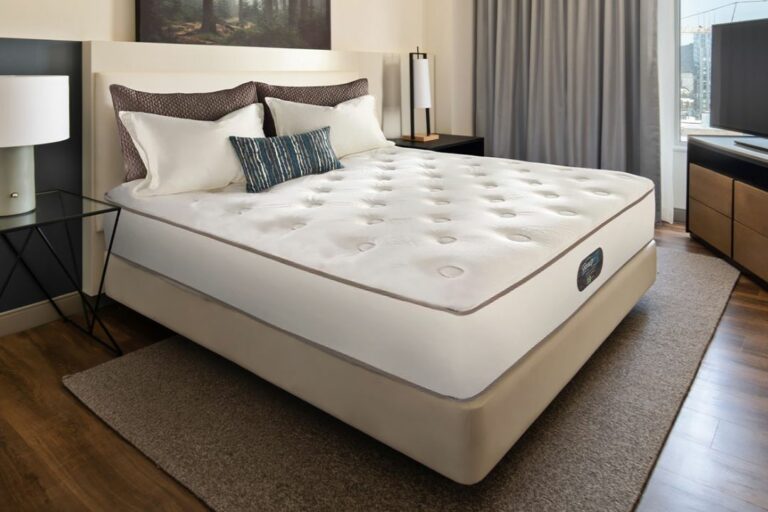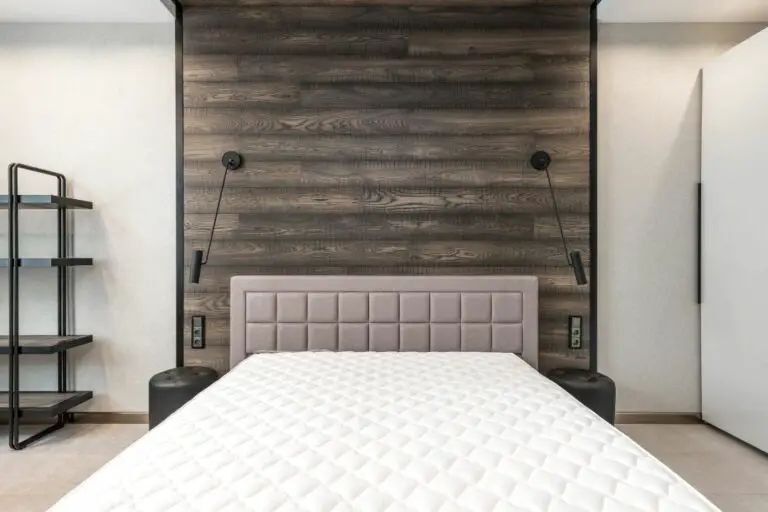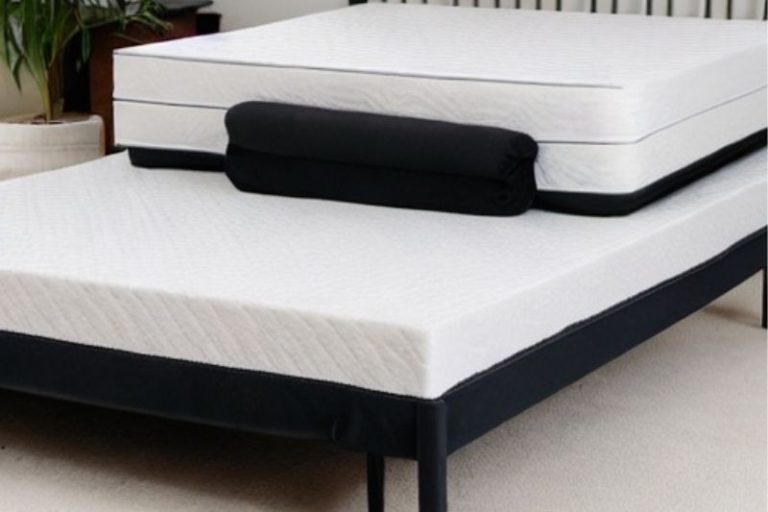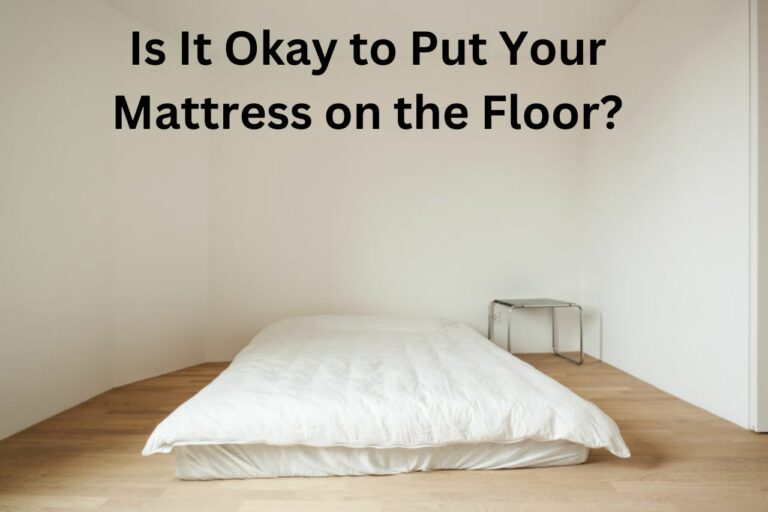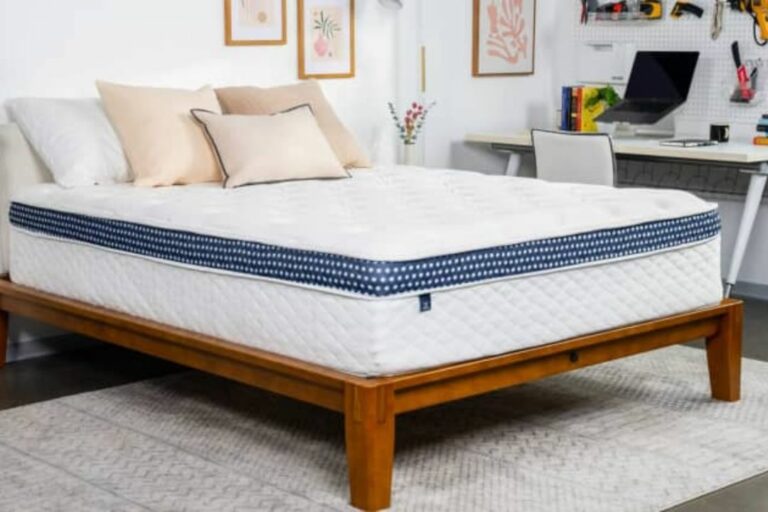Worst Mattress for Back Pain: (A Guide to Avoiding Discomfort!)
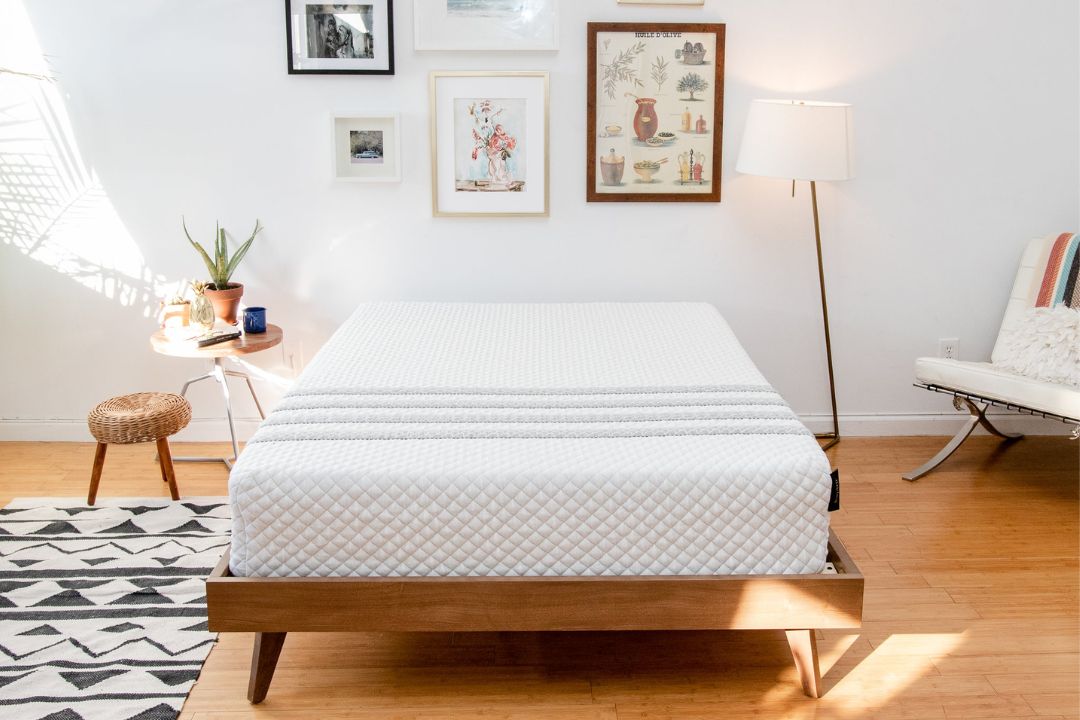
Are you struggling with back pain? One possible culprit could be your mattress.
A poor choice of mattress can exacerbate back pain, making it difficult for you to get a good night’s sleep and find relief.
In this article, we will explore the worst mattresses for back pain, helping you avoid these pitfalls and make an informed decision when it comes to selecting the right mattress for your needs.
Worst Mattress for Back Pain:
The worst mattress for back pain is one that lacks proper support, leading to misalignment of the spine. Too soft or sagging mattresses don’t provide adequate support, while excessively firm ones may create pressure points. Individuals with back pain should seek a balanced, supportive, and comfortable mattress to alleviate discomfort during sleep.
When it comes to mattresses, there is no one-size-fits-all solution for back pain.
However, certain types of mattresses tend to be less supportive and can contribute to discomfort.
We will discuss these mattress types in detail, highlighting their drawbacks and potential impact on your back health.
Whether you prefer a traditional innerspring mattress, memory foam, or latex, it’s essential to understand the potential pitfalls and choose a mattress that provides the necessary support for your back.
So, keep reading to learn more about the worst mattresses for back pain and how to make an informed choice for a restful and pain-free sleep.
The Importance of Choosing the Right Mattress for Back Pain:
When it comes to managing back pain, finding the right mattress can make a world of difference.
The quality of your sleep and overall comfort level are closely tied to the type of mattress you choose.
Here are a few key reasons why selecting the right mattress is crucial for alleviating back pain:
- Support and Alignment: A good mattress provides adequate support and helps maintain proper spinal alignment during sleep. When your spine is aligned correctly, it can help relieve pressure on the back and reduce discomfort. Look for a mattress that offers firmness suited to your needs, as it can provide the necessary support for your back.
- Pressure Points: A mattress that conforms to your body’s contours and supports your pressure points can help minimize back pain. Memory foam mattresses are known for their ability to distribute body weight evenly, relieving pressure on sensitive areas. Additionally, mattresses with zoned support can target specific areas, such as the lower back, providing targeted relief.
- Motion Isolation: If you share your bed with a partner, motion isolation becomes essential. A mattress that isolates movement well ensures that your sleep isn’t disrupted by your partner’s movements throughout the night. This can be particularly beneficial if you have back pain, as uninterrupted sleep promotes better recovery and reduces discomfort.
- Durability: Investing in a durable mattress is essential for long-term back pain management. A mattress that maintains its shape and support over time will provide consistent relief and prevent further aggravation of your back condition.
- Personal Preference: While there are general guidelines to consider, personal preference plays a significant role in choosing the right mattress. What works for one person may not work for another. Testing different mattresses and considering individual comfort preferences is crucial to finding the perfect fit for your back pain needs.
In conclusion, selecting the right mattress is vital for managing back pain effectively.
Focus on finding a mattress that offers proper support, aligns your spine, relieves pressure points, isolates motion, and suits your personal preferences.
By investing in a mattress that addresses these factors, you can promote better sleep and wake up with reduced back pain.
| Support and Alignment | ✓ |
| Pressure Points | ✓ |
| Motion Isolation | ✓ |
| Durability | ✓ |
| Personal Preference | ✓ |
Understanding the Causes of Back Pain:
Back pain can be a real pain in the neck… or rather, the back.
But before we dive into the worst mattresses for back pain, let’s take a moment to understand the causes behind this common affliction.
Here are a few key factors that can contribute to back pain:
- Poor Posture: Slouching like a couch potato might feel cozy in the moment, but it can wreak havoc on your back. Maintaining good posture is essential for spinal alignment and reducing the strain on your back muscles.
- Muscle Strain: Ouch! Pulling a muscle in your back can cause excruciating pain. This can happen from lifting heavy objects incorrectly, sudden movements, or even overexertion during physical activities.
- Spinal Alignment Issues: When your spine is out of whack, so is your back. Conditions like scoliosis or herniated discs can put pressure on the nerves and lead to back pain.
- Lack of Exercise: Your body needs to move to stay strong and healthy. Leading a sedentary lifestyle can weaken your back muscles, making them more prone to injury and pain.
- Poor Mattress Support: Ah, finally, we’re getting to the mattress part! Sleeping on a mattress that doesn’t provide adequate support can cause or worsen back pain. A sagging mattress or one that is too firm can throw off your spinal alignment and put strain on your back.
Now that we have a better understanding of what can cause back pain, it’s clear that getting a good night’s sleep on a supportive mattress is crucial.
In the next sections, we’ll explore the mattresses that have received the worst reviews from back pain sufferers. Stay tuned!
Common Mistakes When Choosing a Mattress:
Choosing the right mattress is crucial when it comes to managing back pain.
However, there are several common mistakes that people make when selecting a mattress.
In this section, we will discuss these mistakes and provide some tips to avoid them.
- Ignoring Individual Needs: One of the biggest mistakes people make is not considering their individual needs. Every person is unique, and what works for one may not work for another. Factors like body type, sleeping position, and personal preferences should all be taken into account. Don’t just go for what is popular or recommended by others.
- Focusing Solely on Firmness: Many people believe that a firmer mattress is always better for back pain, but this is not necessarily true. While a firm mattress may provide support, it may not be suitable for everyone. It’s important to find a balance between support and comfort. Medium-firm mattresses often work well for people with back pain.
- Not Trying Before Buying: Buying a mattress without trying it out first is a common mistake. Online shopping has made it convenient to purchase mattresses, but it’s still essential to visit a store and test different options. Lie down on the mattress for at least 10-15 minutes to see if it feels comfortable and supportive.
- Neglecting Proper Support: Good mattress support is crucial for alleviating back pain. The mattress should keep your spine aligned in a neutral position, regardless of your sleeping position. Look for mattresses with adequate support systems such as pocketed coils or memory foam.
- Ignoring Motion Isolation: If you sleep with a partner, motion isolation is vital to prevent disturbances throughout the night. A mattress that absorbs movement can help minimize the impact of tossing and turning, allowing you to sleep more peacefully.
Remember, choosing the wrong mattress can worsen your back pain or even cause new problems.
Take your time, do your research, and try out different options before making a decision.
By avoiding these common mistakes, you can increase your chances of finding a mattress that provides the comfort and support your back needs.
| Mistake | Tip |
|---|---|
| Ignoring Individual Needs | Consider body type, sleeping position, and personal preferences. |
| Focusing Solely on Firmness | Find a balance between support and comfort. Medium-firm mattresses often work well. |
| Not Trying Before Buying | Test different mattresses in-store for at least 10-15 minutes. |
| Neglecting Proper SupportLook for mattresses with adequate support systems like pocketed coils or memory foam. | |
| Ignoring Motion Isolation | Choose a mattress that absorbs movement to reduce disturbances during sleep. |
Key Features to Look for in a Mattress for Back Pain:
When it comes to finding the right mattress to alleviate back pain, there are a few key features you should keep in mind.
Here are some important factors to consider:
1. Firmness Level:
- Opt for a medium-firm mattress that provides a balance of support and comfort.
- Avoid mattresses that are too soft, as they can cause your spine to sink, leading to more pain.
2. Support:
- Look for a mattress that offers proper support to maintain the natural alignment of your spine.
- Consider mattresses with targeted support zones or those specifically designed for back pain relief.
3. Pressure Relief:
- Find a mattress that can distribute your body weight evenly to relieve pressure points.
- Look for materials like memory foam or latex that can contour to your body shape.
4. Motion Isolation:
- If you share your bed, consider a mattress with good motion isolation to minimize disruptions from your partner’s movements during the night.
5. Durability:
- Investing in a durable mattress can ensure long-term support and comfort for your back.
- Look for mattresses with high-quality materials and long warranty periods.
6. Cooling Features:
- If you tend to sleep hot, consider mattresses with cooling technologies like gel-infused foam or breathable covers to prevent overheating.
Remember, finding the right mattress for back pain is a personal journey. It’s essential to test mattresses in person, if possible, and take advantage of trial periods offered by many mattress companies.
Additionally, consulting with a healthcare professional can provide valuable guidance tailored to your specific needs.
| Feature | Importance |
|---|---|
| Firmness Level | High |
| Support | High |
| Pressure Relief | Medium |
| Motion Isolation | Medium |
| Durability | Medium |
| Cooling Features | Low |
By considering these key features, you can increase your chances of finding a mattress that will provide the necessary support and comfort to help alleviate your back pain.
:So, take your time, do your research, and prioritize your needs to make an informed decision.
Top Mattresses Recommended for Back Pain Relief:
If you’re struggling with back pain, finding the right mattress can make a world of difference.
Here are some top mattress recommendations to help alleviate your discomfort:
1: Memory Foam Mattresses:
- Memory foam mattresses contour to your body, providing excellent support and pressure relief. They distribute your weight evenly, reducing stress on your back.
- These mattresses also absorb movement, so if you sleep with a partner, you won’t be disturbed by their tossing and turning.
- Hybrid mattresses combine the benefits of memory foam and innerspring mattresses. They offer the right balance of support and comfort.
- With a hybrid mattress, you’ll experience the contouring properties of memory foam along with the added support from individually wrapped coils.
3: Latex Mattresses:
- Latex mattresses are known for their responsiveness and durability. They offer a supportive yet bouncy feel, which can be beneficial for back pain sufferers.
- Natural latex mattresses are hypoallergenic and resistant to dust mites, making them a great choice for those with allergies.
- An adjustable bed allows you to elevate different parts of your body, providing customized support for your back.
- By adjusting the position of the bed, you can find the most comfortable angle for your spine, reducing pressure and promoting better sleep.
5: Firmness Level:
- While the type of mattress is important, finding the right firmness level is equally crucial.
- A medium-firm mattress is generally recommended for back pain relief. It offers enough support to align your spine while still providing some cushioning for pressure points.
Remember, everyone’s preferences and needs are different.
It’s essential to try out mattresses and find the one that feels most comfortable for you.
Additionally, consulting with a healthcare professional can provide further guidance tailored to your specific condition.
| Mattress TypeBenefitsMemory Foam- Contours to body shape – Pressure relief – Motion isolation | |
|---|---|
| Hybrid | – Support and comfort balance – Contouring properties – Individually wrapped coils |
| Latex | – Responsiveness and durability – Supportive and bouncy feel – Hypoallergenic |
| Adjustable Bed | – Customized support – Spine alignment – Pressure reduction |
| Medium-Firm | – Proper spine alignment – Cushioning for pressure points |
Alternative Solutions for Back Pain Management:
If you’re suffering from back pain and looking for alternative solutions to manage it, there are several options you can explore.
While it’s important to consult with a healthcare professional for a personalized approach, here are a few strategies that may help alleviate your discomfort:
- Exercise and Physical Therapy: Engaging in regular exercise and working with a physical therapist can strengthen your back muscles and improve flexibility. Low-impact activities like swimming and yoga can be particularly beneficial for relieving back pain.
- Posture Correction: Maintaining good posture throughout the day can significantly reduce strain on your back. Avoid slouching and make a conscious effort to sit and stand upright. Using ergonomic chairs and pillows can also provide support and promote proper alignment.
- Weight Management: Carrying excess weight can put additional stress on your back, exacerbating pain. If you’re overweight, losing even a small amount can make a noticeable difference in relieving back pain.
- Sleeping Position and Support: Your mattress and sleeping position play a crucial role in back pain management. Opt for a medium-firm mattress that provides adequate support for your spine. Sleeping on your side with a pillow between your knees can help maintain proper spinal alignment.
- Hot and Cold Therapy: Applying heat or cold to the affected area can provide temporary relief from back pain. Use a heating pad or take a warm bath to relax muscles, or apply an ice pack wrapped in a towel to reduce inflammation.
- Stress Reduction Techniques: Chronic stress can contribute to muscle tension and back pain. Incorporating stress reduction techniques like meditation, deep breathing exercises, or engaging in hobbies you enjoy can help manage both physical and emotional aspects of back pain.
Remember, these alternative solutions may not work for everyone, and it’s important to find what works best for you.
Consulting with a healthcare professional is crucial in developing a comprehensive plan to address your specific needs.
By incorporating these strategies into your daily routine, you can take positive steps towards managing back pain and improving your overall well-being.
| Exercise and Physical Therapy |
|---|
| Swimming |
| Yoga |
| Posture Correction |
| Weight Management |
| Sleeping Position and Support |
| Hot and Cold Therapy |
| Stress Reduction Techniques |
Conclusion: Worst Mattress for Back Pain
The worst mattress for back pain is one that lacks proper support, leading to misalignment of the spine and increased discomfort.
Mattresses that are too soft or sagging don’t provide adequate support, while excessively firm ones may create pressure points.
To alleviate back pain, it’s crucial to find a balanced, supportive, and comfortable mattress that promotes proper spinal alignment during sleep.

